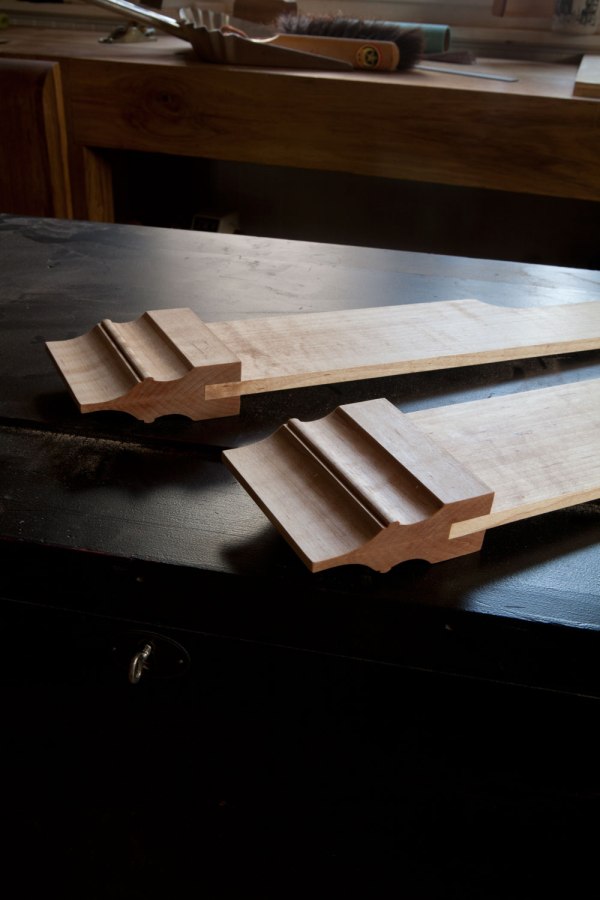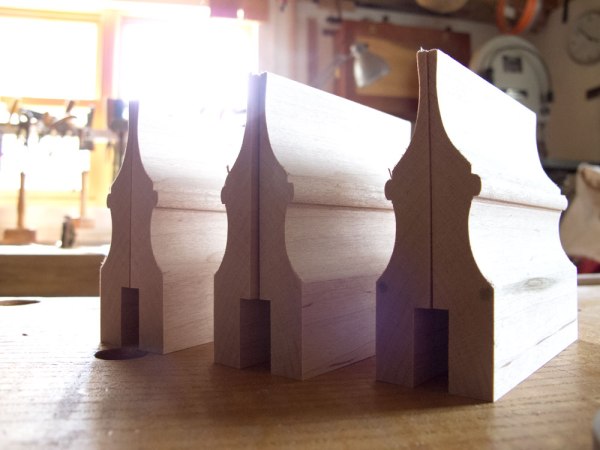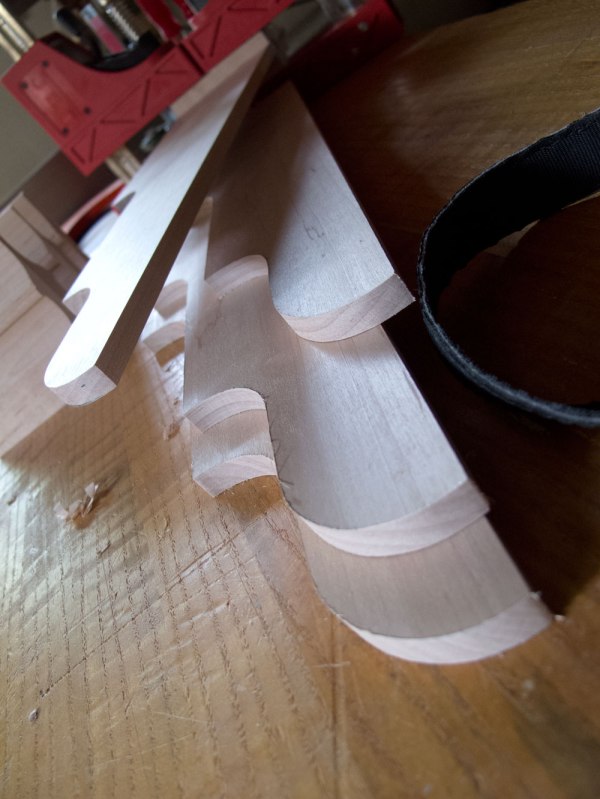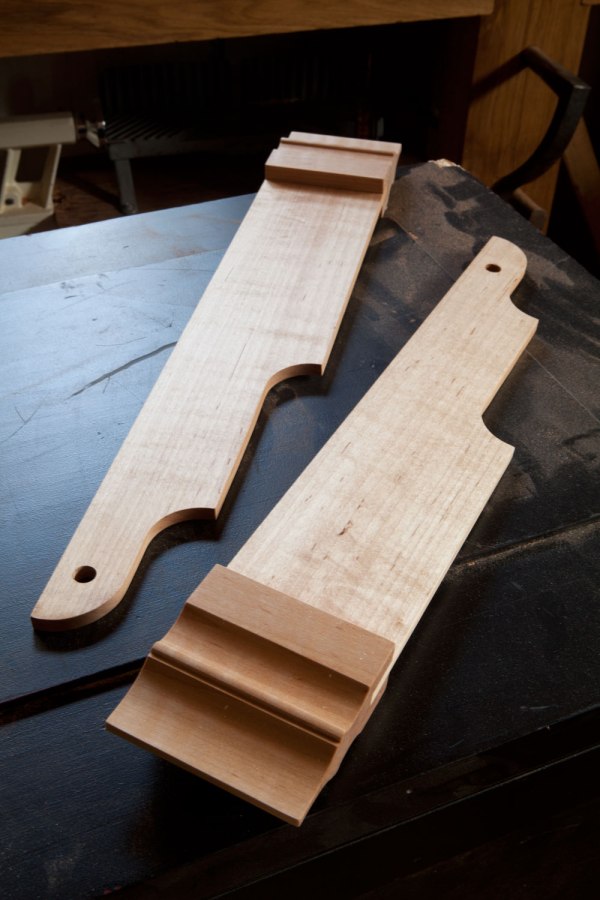
When I look at the moulded grip of one of these now-uncommon squares, several thoughts surface again and again.
1. The moulded stock looks like an offcut. Could it be a section of bannister?
2. I’ve never seen a bannister that looks like those moulded shapes.
3. It looks like two pieces of crown moulding glued together.
4. But there is no joint seam shown in the drawings. The stock looks like one piece.
5. Moulding both sides of the stock would be inconvenient from a workholding perspective.
6. Perhaps I’ll mould one piece and glue up the stock from two pieces of moulding.
Then I go back to No. 1 and repeat a few times until I get to No. 7. (Shut up and have a beer, son.) So for the first four of my Melencolia squares, I made the stock from one 6’ length of moulding that I planed up with hollows and rounds (Nos. 5, 12 and 14 to be exact). Then I cut a rabbet on the back of the moulding and chopped up the moulding into 4”-long pieces.

(Yes, I know there are other ways to do this that might be better. But I wanted to be able to tune each rabbet to fit its blade before assembly.)
Then I glued up the stock with hide glue. Easy.
The next batch of squares will be more Germanic and the stock will be from one piece. I have some nice superchunks of sapele left over from Roorkee chairs.

When I look at the blade of the square, here is my thought progression.
1. Was the decoration perhaps useful?
2. Remember the nib on handsaws.
3. Could the decoration serve some purpose for layout?
4. Remember the decorative shaped toe on Dutch saws.
5. Could the steps on the blade represent different common widths used in the shop?
6. Nobody asks why men have nipples do they? They just do.
7. Could the curves on the Swedish one be useful like a French curve in drafting?
8. Nipples aren’t really all that decorative, are they.
So my guess is the decorations are decorative, and make for a decorative effect. But feel free to plug away with your own theories.
I made the blade 3/8” thick because I didn’t want to plane down the maple any more than necessary. The next batch will use 1/4”-thick blades. I merely glued the blades into the stocks. There is no evidence of pinning in the Melencolia square, though Moxon and Holme say it is both glued and pinned in the similar miter square.
So I’ll add some pins in the next batch.
Next up, a detour into the world of workshop signage and its connection to the square. Plus, a version that has an intriguing metal part.
— Christopher Schwarz
- The Melencolia I Square, Part 1
- Melencolia Square, Part 2: An Angular English Friend
